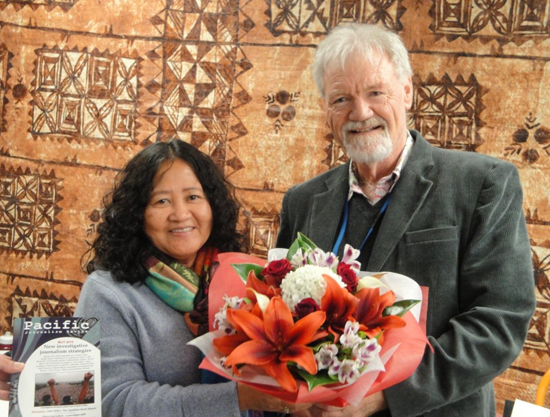
A major study on journalists engaging with reluctant, vulnerable sources and whistleblowers in New Zealand is featured in the latest Pacific Journalism Review launched last week.
This is among several contributions by Journalism Education Association of New Zealand (JEANZ) members to the research journal with this edition being devoted to an investigative journalism theme.
_cover_tall200px.jpg) The study, drawn from doctoral research by James Hollings of Massey University, analyses four high-profile examples of NZ investigative journalism based on “revelation by vulnerable and reluctant sources”.
The study, drawn from doctoral research by James Hollings of Massey University, analyses four high-profile examples of NZ investigative journalism based on “revelation by vulnerable and reluctant sources”.
It also establishes a best practice model for journalists seeking to persuade vulnerable sources to speak out “safely and effectively”.
Also in the edition, two leading investigative journalists who are media educators have called on university journalism schools to pool their top student resources to undertake investigative journalism projects.
They have appealed to journalism schools to work collaboratively across institutions and borders to target major investigations.
They present their case – including a proposal to set up a so-called UniMuckraker project for the Australia-NZ-Pacific region – in PJR.
Australian Bill Birnbauer of Monash University, who is a member of the US-based International Consortium of Investigative Journalists, proposed the UniMuckraker strategy for collaboration with a joint multimedia website in an article examining non-profit foundations and their support for investigative journalism in the US.
He says “absence of corporate interference, government control, daily deadline pressures, or the need to attract advertising” puts universities in a strong position to produce quality investigative journalism.
Editor David Robie said this edition celebrated some of the best investigative journalism in New Zealand and focused on strategies to strengthen probing reporting of the future.
A selection of colour photographs from Nepali Times editor-in-chief Kunda Dixit’s Frames of War exhibition at AUT University last December is featured in this edition of PJR.
Among other wide-ranging articles is an inquiry into the Ngatihine forestry controversy and the media in the Far North in the 1970s by photojournalist John Miller.



